Themed collection XFELs: cutting edge X-ray light for chemical and material sciences

XFELs: cutting edge X-ray light for chemical and material sciences
Kiyotaka Asakura, Kelly J. Gaffney, Christopher Milne, and Makina Yabashi introduce the PCCP themed issue on X-ray free-electron lasers (XFELs).

Phys. Chem. Chem. Phys., 2020,22, 2612-2614
https://doi.org/10.1039/C9CP90304F
Attosecond transient absorption spooktroscopy: a ghost imaging approach to ultrafast absorption spectroscopy
Recently demonstrated isolated attosecond XFEL pulses should allow the probing of ultrafast electron dynamics at X-ray wavelengths. The authors use ghost imaging to enable high-resolution transient absorption spectroscopy at fluctuating XFEL sources.

Phys. Chem. Chem. Phys., 2020,22, 2704-2712
https://doi.org/10.1039/C9CP03951A
Direct observation of the electronic states of photoexcited hematite with ultrafast 2p3d X-ray absorption spectroscopy and resonant inelastic X-ray scattering
Ultrafast Fe L3 XAS and 2p3d RIXS elucidate the photoexcitation process of hematite.
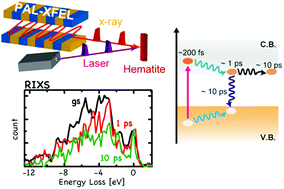
Phys. Chem. Chem. Phys., 2020,22, 2685-2692
https://doi.org/10.1039/C9CP03374B
Dyson orbitals within the fc-CVS-EOM-CCSD framework: theory and application to X-ray photoelectron spectroscopy of ground and excited states
Ionization energies and Dyson orbitals within frozen-core core–valence separated equation-of-motion coupled cluster singles and doubles (fc-CVS-EOM-CCSD) enable efficient and reliable calculations of standard XPS and of UV-pump/XPS probe spectra.
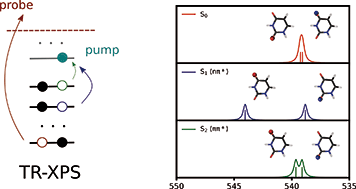
Phys. Chem. Chem. Phys., 2020,22, 2693-2703
https://doi.org/10.1039/C9CP03695D
How to stay out of trouble in RIXS calculations within equation-of-motion coupled-cluster damped response theory? Safe hitchhiking in the excitation manifold by means of core–valence separation
We present a novel approach with robust convergence of the response equations for computing resonant inelastic X-ray scattering (RIXS) cross sections within the equation-of-motion coupled-cluster (EOM-CC) framework.
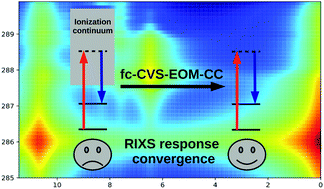
Phys. Chem. Chem. Phys., 2020,22, 2629-2641
https://doi.org/10.1039/C9CP03688A
Time-resolved observation of transient precursor state of CO on Ru(0001) using carbon K-edge spectroscopy
The transient dynamics of carbon monoxide (CO) molecules on a Ru(0001) surface following femtosecond optical laser pump excitation has been studied by monitoring changes in the unoccupied electronic structure using an ultrafast X-ray free-electron laser (FEL) probe.

Phys. Chem. Chem. Phys., 2020,22, 2677-2684
https://doi.org/10.1039/C9CP03677F
Resolving structures of transition metal complex reaction intermediates with femtosecond EXAFS
Femtosecond EXAFS is implemented at an XFEL and can be used to observe short-lived intermediate states of photoexcited transition metal complexes in solution.
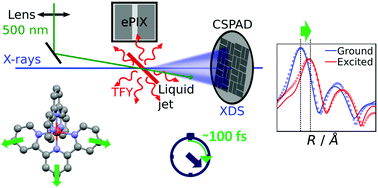
Phys. Chem. Chem. Phys., 2020,22, 2660-2666
https://doi.org/10.1039/C9CP03483H
Ultrafast nonadiabatic dynamics probed by nitrogen K-edge absorption spectroscopy
Quantum dynamics simulations are used to simulate the ultrafast X-ray Absorption Near-Edge Structure (XANES) spectra of photoexcited pyrazine including two strongly coupled electronically excited states and four normal mode degrees of freedom.
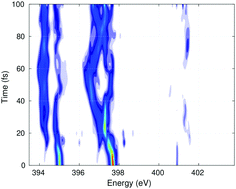
Phys. Chem. Chem. Phys., 2020,22, 2667-2676
https://doi.org/10.1039/C9CP03019K
Multi-particle momentum correlations extracted using covariance methods on multiple-ionization of diiodomethane molecules by soft-X-ray free-electron laser pulses
Correlations between the ion momenta are extracted by covariance methods formulated for the use in multiparticle momentum-resolved ion time-of-flight spectroscopy.
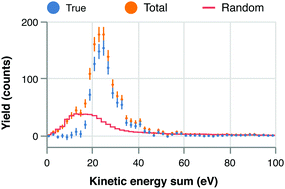
Phys. Chem. Chem. Phys., 2020,22, 2648-2659
https://doi.org/10.1039/C9CP03638E
Design of a liquid cell toward three-dimensional imaging of unidirectionally-aligned particles in solution using X-ray free-electron lasers
A liquid cell was designed for coherent diffractive imaging measurements at high tilt angles and tested at SACLA.
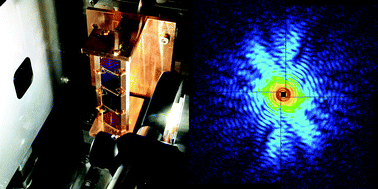
Phys. Chem. Chem. Phys., 2020,22, 2622-2628
https://doi.org/10.1039/C9CP03658J
Core–valence-separated coupled-cluster-singles-and-doubles complex-polarization-propagator approach to X-ray spectroscopies
The iterative subspace algorithm to solve the CCSD complex linear response equations has been modified to include a core–valence separation projection step to overcome convergence problems. Illustrative results are reported for XAS, XCD, XES and RIXS.
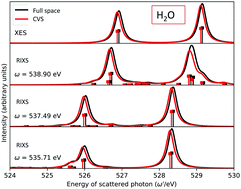
Phys. Chem. Chem. Phys., 2020,22, 2642-2647
https://doi.org/10.1039/C9CP03696B
Photoinduced anisotropic distortion as the electron trapping site of tungsten trioxide by ultrafast W L1-edge X-ray absorption spectroscopy with full potential multiple scattering calculations
Ultrafast XANES spectra and full-potential multiple scattering reveal the anisotropic structure change of photoexcited WO3.
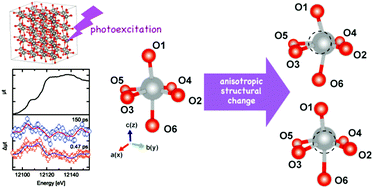
Phys. Chem. Chem. Phys., 2020,22, 2615-2621
https://doi.org/10.1039/C9CP01332F
About this collection
XFELs (X-ray free electron lasers) provide a coherent, monochromatic and ultra-short pulse X-ray light. This enables experiments into the ultrafast dynamics of electron excitation and chemical reactions, and coherent imaging of materials. Ten years have passed since hard XFEL research began at the Linac Coherent Light Source (LCLS), SLAC National Accelerator Laboratory. Guest Edited by Professor Kiyotaka Asakura (PCCP Associate Editor, Hokkaido University), Professor Kelly Gaffney (SLAC and Stanford University),
Dr Chris Milne (Paul Scherrer Institut) and Dr Makina Yabashi (RIKEN) this collection reviews the very recent achievements of XFELs in chemical and material sciences.